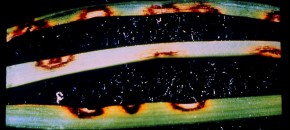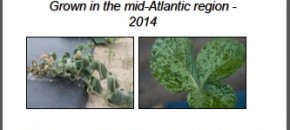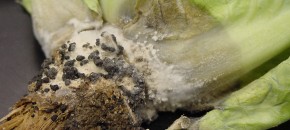The weather has not been favorable for maximum effectiveness of many postemergence (or burndown) herbicides. Cool weather and overcast skies are not ideal conditions for herbicide performance. And given that many fall and early spring emerging weeds can be difficult to control once the crop is planted, it is important to scout your no-till fields […]
Continue reading...Got Plans for Monday Morning?

If you are managing high value turf areas, like a golf course putting green, I hope you are watching the weather. By most accounts, we are in for some cold rain next week. High temperatures in the low 50s and a 90% chance of rain from Tuesday through Thursday are imminent. Crummy cycling weather, but […]
Continue reading...Leaf Spot and Melting-Out is Active

The leaf spot phase of this disease, caused by the fungus Drechslera poae, is apparent on susceptible Kentucky bluegrass turf at this time.
Continue reading...Organic SWD Management Survey
There is a national effort to identify management options for no-spray or organic growers that are trying to manage spotted wing drosophila. If you are an organic grower, please consider filling out this survey to help researchers prioritize areas of research. Organic Grower Survey on Spotted Wing Drosophila
Continue reading...Understanding Fungicide Resistance

Efforts have been made in recent years in New Jersey and the surrounding mid-Atlantic region to help vegetable growers understand and manage potential fungicide resistance development on their farm. Since 2007, Fungicide Resistance Management Guidelines have been available and distributed to vegetable growers throughout the region. Over, 20,000 FRAC guides have been distributed over the past […]
Continue reading...Controlling White Mold

White mold, or lettuce drop, caused by Sclerotinia sclerotiorum, has been reported. White mold can cause serious losses in lettuce and other susceptible crops if left uncontrolled.
Continue reading...